
Caring behavior of caregivers of elderly at Baan Bangkae social welfare development center (2018)
Title : Caring behavior of caregivers of elderly at Baan Bangkae social welfare development center
Researcher : Pornpimol Poomlittikul1* and Duangkamol Viroonudomphol1*
Department : 1* Faculty of Nursing, Siam University, Bangkok, Thailand
E-mail : v_duangkamol@yahoo.com
Abstract : Background: To study the self- care behaviors of elderly caregivers at Baan-Bangkae Welfare Development Center for older persons, Bangkok. Methodology: Descriptive research was conducted among thirty two elderly caregivers by purposive sampling technique. Data were collected using the questionnaires that constructed by the researcher during May- June 2016. Data were analyzed using basic statistic and stepwise multiple regression. Findings: The caregivers’ knowledge of self-care, belief in self-efficacy, caregivers role acceptance, social support and caregivers’ self caring behaviors of elderly persons score were as being in a moderate level. The respondents in perimeter which were different in sex age would be statistically difference at 0.05 in self-care behavior. Supportive factors for self-care behavior, sex, age, marital status, educational level, occupation and family’s monthly income, caregivers’ knowledge of self-care, caregivers role acceptance and social support predicted the caregivers’ self-care behaviors at 35% with statistically significant at 0.05.
Conclusion: These study results emphasized the rising public health of elderly. The goal was to reduce burden and depression and increase self-care by providing participants with information and tools to assist in their role as caregivers. Further research is needed to clearly understand the needs and determine effective interventions for our rapidly aging population and diminishing number of caregivers. Nurses are in a pivotal position to implement and evaluate evidence-based interventions for elderly or other dementias.
Keywords : caregivers’ self-care behavior, predictors of caregivers’ self-care behavior, elderly caregivers
Donwload PDF : Caring behavior of caregivers of elderly at Baan Bangkae social welfare development center
Proceeding : The 3rd International Conference of Multidisciplinary Approaches on UN Sustainable Development Goals UNSDGs 2018, Bangkok, Thailand
Link to Proceeding: http://dept.npru.ac.th/unsdgs2018/
Bibliography : Pornpimol Poomlittikul & Duangkamol Viroonudomphol. (2018). Caring behavior of caregivers of elderly at Baan Bangkae social welfare development center. In Proceeding The 3rd International Conference of Multidisciplinary Approaches on UN Sustainable Development Goals UNSDGs 2018 (p.84-90). Nakhon Pathom: Nakhon Pathom Rajabhat University.
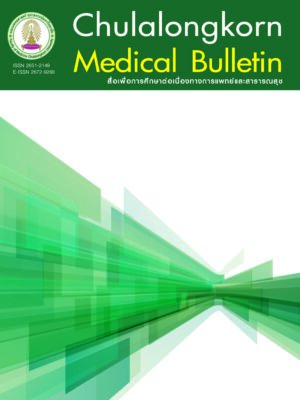
Cerebrovascular disease, risk faction, and quality of life: A systematic review (2019)
ชื่อบทความ : โรคหลอดเลือดสมอง ปัจจัยเสี่ยงและผลกกระทบต่อคุณภาพชีวิต
Title : Cerebrovascular disease, risk faction, and quality of life: A systematic review
ผู้เขียน/Author : วราภรณ์ คำรศ และ ทศพร เอกปรีชากุล
Researcher : Waraporn Khumros* and Thosporn Ekpreechakul
Department : * Faculty of Nursing, Siam University, Bangkok, Thailand
E-mail : wara_aui@hotmail.com
Abstract : Background: Cerebrovascular disease is a common neurological disease. However, these results remain unclear and can be awared of the factors that cause disease from everyday life. Researchers are interested in the subject. Objectives: This study aimed to assess the association between cerebrovascular disease and quality of life. Methods: A systematic review search of databases that met the inclusion and exclusion criteria. Relevant data were obtained from PubMed in 2009 to 2014. A systematic search of databases resulted in PICOS (Participants: stroke patients; Intervention: stroke; Comparison: control group, compare group; Outcome: association between cerebrovascular disease and quality of life and Study design: systematic review, meta-analysis, cohort study, literature review). Results: A systematic search of databases revealed that 85 articles met the inclusion and exclusion criteria from 92,790 articles. The result showed that cerebrovascular disease was associated with quality of life. Conclusion: This study suggested that cerebrovascular disease was associated with factor preventive disease. The knowledge can be applied in everyday life to reduce the number of cerebrovascular disease patients in the future
Keywords : Cerebrovascular disease, quality of life, risk factor of cerebrovascular disease
Donwload PDF : Cerebrovascular disease, risk faction, and quality of life: A systematic review
Link to Published: Chulalongkorn Medical Bulletin
Bibliography : วราภรณ์ คำรศ และ ทศพร เอกปรีชากุล. (2562). โรคหลอดเลือดสมอง ปัจจัยเสี่ยงและผลกกระทบต่อคุณภาพชีวิต Cerebrovascular disease, risk faction, and quality of life : A systematic review. Chula Med Bull, 1(5), 473-487.
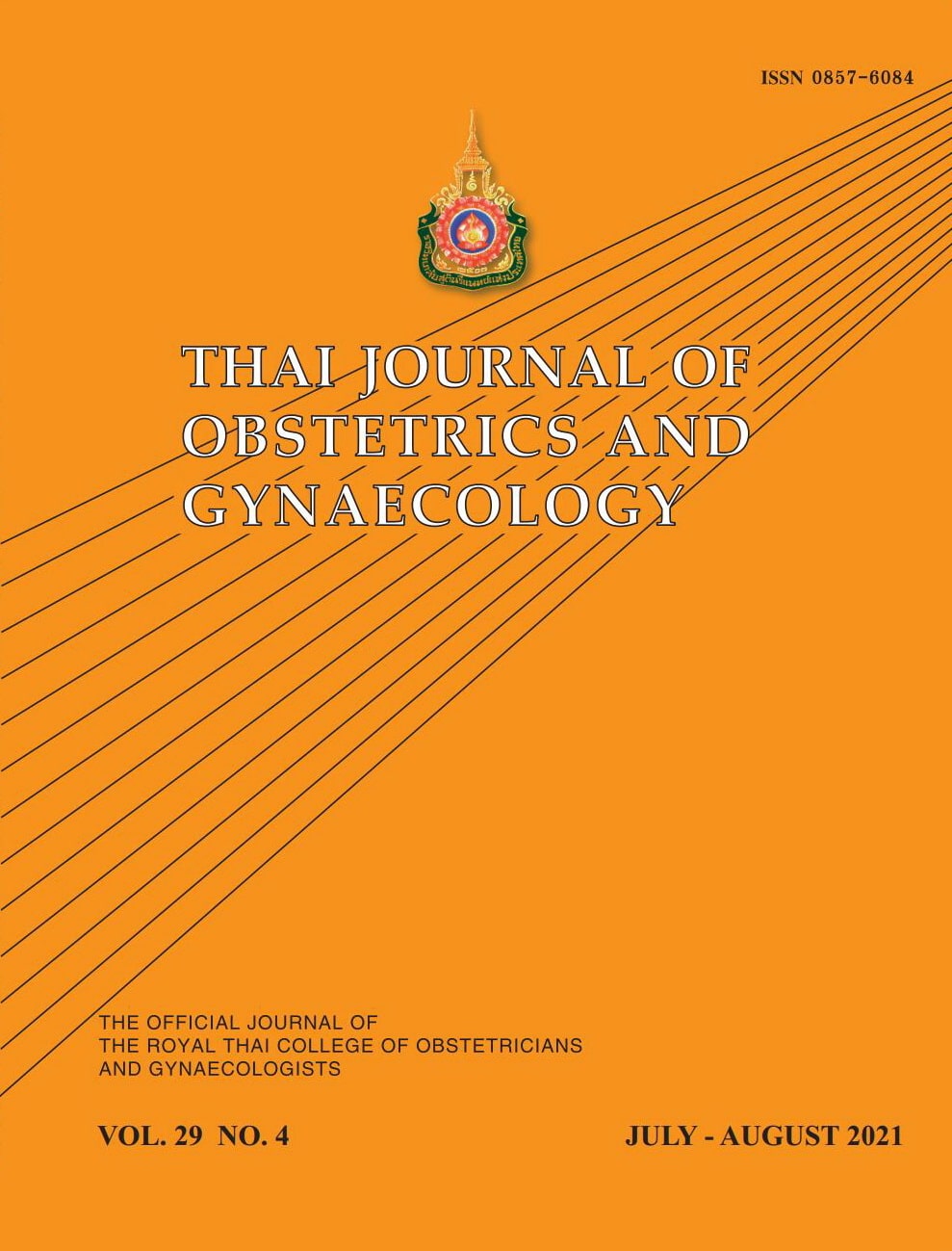
Cesarean section rate based on the robson 10-group classification at Rajavithi Hospital from 2015-2018 (2021)
Title : Cesarean section rate based on the robson 10-group classification at Rajavithi Hospital from 2015-2018
Researcher : Khornwong, S., Kovavisarach, E.,
Abstract : Objectives: To analyze cesarean section (CS) rates based on the Robson 10-group classification system (TGCS) and to examine the trends of cesarean section rates at Rajavithi Hospital (RH) between 2015 and 2018.
Materials and Methods: This cross-sectional study included all deliveries in RH between 1st January, 2015 and 31st December, 2018. The TGCS was used to categorize cesarean deliveries and all data collected.
Results: A total of 19,840 deliveries were analyzed. The annual CS rates were 35.5% (1710/4813), 36.6% (1809/4949), 35.2% (1836/5223) and 34.8% (1689/4855) in 2015, 2016, 2017 and 2018, respectively. The trend of the CS rates in each group and that of relative and absolute contributions were similar within the study period (p = 0.290). Group 1, 3 and 10 accounted for almost 70% of the study population and multiparous women with previous CS in (30.8%, 32.6%, 31.9% and 31.9%; p = 0.718), followed by group 2 (17.5%, 18%, 18.9% and 17.9%; p = 0.506) and group 1 (16.1%, 16.8%, 14.4% and 15.2%; p = 0.211), respectively.
Conclusion: The overall CS rate during the four-year period 2015-2018 varied between 34.8% and 36.6%, and the highest relative and absolute contribution to the overall CS rate at.
Keywords: Cesarean section rate The Robson 10-group classification Rajavithi Hospital
Link to Academic article: DOI: https://doi.org/10.14456/tjog.2021.23
Journal : Thai Journal of Obstetrics and Gynaecology, 2021, 29(4).
Bibliography : Khornwong, S., & Kovavisarach, E., (2021). Cesarean section rate based on the robson 10-group classification at Rajavithi Hospital from 2015-2018. Thai Journal of Obstetrics and Gynaecology, 29(4), 191–197.
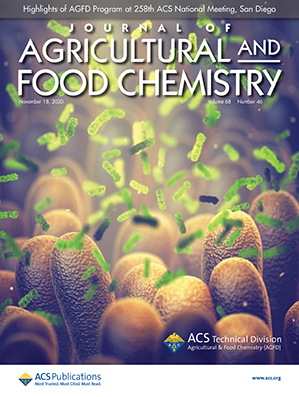
Changing the Landscape: An Introduction to the Agricultural and Food Chemistry Technical Program at the 258th American Chemical Society National Meeting in San Diego(2020)
Title : Changing the Landscape: An Introduction to the Agricultural and Food Chemistry Technical Program at the 258th American Chemical Society National Meeting in San Diego
Researcher : Michael Appell, Atanu Biswas, SeChin Chang, Wei Chen, H. N. Cheng, Jim Daily III, Xuetong Fan, Michael Granvogl, Mingming Guo, Yoshihiro Ito, Tony Jin, Masuko Kobori, Jane V. Leland, LinShu Liu, Yangchao Luo, Shaun MacMahon, Kanjana Mahattanatawee*, Sunghyun Nam, Coralia Osorio, Bosoon Park, Daxi Ren, Shengmin Sang, Fereidoon Shahidi, Michael Tunick, Chibuike C. Udenigwe, Qin Wang, Wallace H. Yokoyama, Liangli Lucy Yu, Yaqiong Zhang, and Yingdong Zhu
Department : *Food Technology Department, Faculty of Science, Siam University
E-mail : *kanjana@siam.edu
ฐานข้อมูลงานวิจัย มหาวิทยาลัยสยาม : –
Link to article: Journal of Agricultural and Food Chemistry, 2020, 68(46), pp. 12769–12772. https://doi.org/10.1021/acs.jafc.0c02809
Publication: Journal of Agricultural and Food Chemistry / in Scopus
Bibliography : Appell, M., Biswas, A., Chang, S., Chen, W.,Cheng, H. N., Daily III, J., Fan, X., Granvogl, M., Guo, M., Ito, Y.,Jin, T., Kobori, M., Leland, J. V., Liu, L., Luo, Y.,MacMahon, S., Mahattanatawee, K.,Nam, S., Osorio,C., …Zhu, Y. (2020). Journal of Agricultural and Food Chemistry, 68(46), 12769–12772. https://doi.org/10.1021/acs.jafc.0c02809
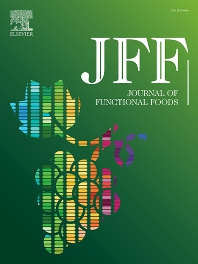
Characterization of novel calcium compounds from tilapia (Oreochromis niloticus) by-products and their effects on proliferation and differentiation of MC3T3-E1 cells (2023)
Title : Characterization of novel calcium compounds from tilapia (Oreochromis niloticus) by-products and their effects on proliferation and differentiation of MC3T3-E1 cells
Researcher : Chakkapat Aenglong, Nujamee Ngasakul, Maruj Limpawattana, Wanida Sukketsiri, Suwimol Chockchaisawasdee, Costas Stathopoulos, Supita Tanasawet, Wanwimol Klaypradit
Department : สำนักอธิการบดี มหาวิทยาลัยสยาม
E-mail : maruj.lim@siam.edu
ฐานข้อมูลงานวิจัย มหาวิทยาลัยสยาม : –
Link to article: Journal of Functional Foods, 2023, 100, 105361. https://doi.org/10.1016/j.jff.2022.105361
Journal : Journal of Functional Foods / in Scopus
Bibliography : Aenglong, C., Ngasakul, N.,Limpawattana, M., Sukketsiri, W., Chockchaisawasdee, S.,Stathopoulos, C., Tanasawet, S., & Klaypradit, W. (2023). Characterization of novel calcium compounds from tilapia (Oreochromis niloticus) by-products and their effects on proliferation and differentiation of MC3T3-E1 cells. Journal of Functional Foods, 100, 105361. https://doi.org/10.1016/j.jff.2022.105361
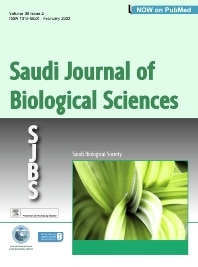
Chemical evaluation and antibacterial activity of novel bioactive compounds from endophytic fungi in Nelumbo nucifera (2020)
Title : Chemical evaluation and antibacterial activity of novel bioactive compounds from endophytic fungi in Nelumbo nucifera
Researcher : Techaoei, S., Jirayuthcharoenkul, C., Jarmkom, K., Dumrongphuttidecha, T., Khobjai, W.
Department :
Abstract : The objective of this study was to characterize an endophytic fungi producing-bioactive compound from the aquatic plant, Nelumbo nucifera. All parts of such plant were cleaned with surface sterilization technique and cultured on potato dextrose agar to isolate endophytic fungi. The identification was characterized by morphological and molecular technique. Fungal isolates were screened to discover antimicrobial activities by disc diffusion method against Methicillin-resistant Staphylococcus aureus DMST20651 (MRSA). MIC and MBC for those crude fungal extracts were determined. Finally, the chemical profile of crude extract was determined by gas chromatography and mass spectrometry. Six endophytic fungi were isolated from the surface-satirized parts of N. nucifera. Based on disc diffusion assay, the highest antibacterial activity against MRSA was isolate ST9.1 identified as Aspergillus cejpii. Results demonstrated that the ethyl acetate extraction had more active fractions with MIC of 2.5 mg/ml and MBC concentration of 50.0 mg/ml. The crude extracts were developed to identify the chemical constituents by gas chromatography and mass spectrometry. The major component of crude extract of endophytic fungi was 5-(1H-Indol-3-yl)-4,5-dihydro-[1,2,4]triazin-3-ylamine (C11H11N5). Thus, the plant could be used in the treatment of infectious diseases caused by bacterial pathogen.
Keywords: Antimicrobial activity, N. nucifera, Methicillin-resistant S. aureus, Endophytic fungi
Link to Academic article: https://doi.org/10.1016/j.sjbs.2020.08.037
Journal : Saudi Journal of Biological Sciencesthis, 2020, 27(11)
Bibliography : Techaoei, S., Jirayuthcharoenkul, C., Jarmkom, K., Dumrongphuttidecha, T., & Khobjai, W. (2020). Chemical evaluation and antibacterial activity of novel bioactive compounds from endophytic fungi in Nelumbo nucifera. Saudi Journal of Biological Sciencesthis, 27(11), 2883–2889. Retrieved from https://doi.org/10.1016/j.sjbs.2020.08.037
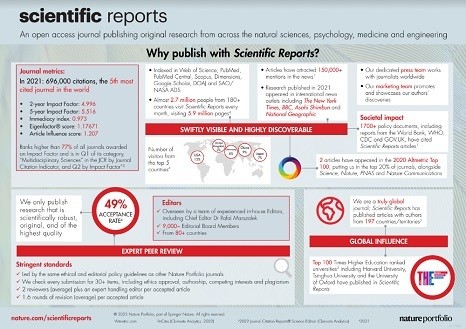
Citrate pharmacokinetics in critically ill liver failure patients receiving CRRT (2022)
Title : Citrate pharmacokinetics in critically ill liver failure patients receiving CRRT
Researcher : Thanapongsatorn, P., Chaijamorn, W.,[mfn]1[/mfn] Sirivongrangson, P., …Lucksiri, A., Srisawat, N.
Department : 1Faculty of Medicine, Siam University, Bangkok, Thailand
Abstract : Citrate has been proposed as anticoagulation of choice in continuous renal replacement therapy (CRRT). However, little is known about the pharmacokinetics (PK) and metabolism of citrate in liver failure patients who require CRRT with regional citrate anticoagulation (RCA). This prospective clinical PK study was conducted at King Chulalongkorn Memorial Hospital between July 2019 to April 2021, evaluating seven acute liver failure (ALF) and seven acute-on-chronic liver failure (ACLF) patients who received CRRT support utilizing RCA as an anticoagulant at a citrate dose of 3 mmol/L. For evaluation of the citrate PK, we delivered citrate for 120 min and then stopped for a further 120 min. Total body clearance of citrate was 152.5 ± 50.9 and 195.6 ± 174.3 mL/min in ALF and ACLF, respectively. The ionized calcium, ionized magnesium, and pH slightly decreased after starting citrate infusion and gradually increased to baseline after stopping citrate infusion. Two of the ACLF patients displayed citrate toxicity during citrate infusion, while, no ALF patient had citrate toxicity. In summary, citrate clearance was significantly decreased in critically ill ALF and ACLF patients receiving CRRT. Citrate use as an anticoagulation in these patients is of concern for the risk of citrate toxicity.
Link to Academic article: https://www.nature.com/articles/s41598-022-05867-8
Journal : Scientific Reports,
Bibliography : Thanapongsatorn, P., Chaijamorn, W., Sirivongrangson, P., Tachaboon, S., Peerapornratana, S., Lumlertgul, N.,…Srisawat, N. (2022). Citrate pharmacokinetics in critically ill liver failure patients receiving CRRT. Scientific Reports, 12(1), 1815.
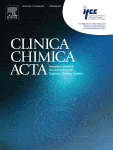
Clinical and molecular characteristics of FMR1 microdeletion in patient with fragile X syndrome and review of the literature (2024)
Title : Clinical and molecular characteristics of FMR1 microdeletion in patient with fragile X syndrome and review of the literature
Researcher : Areerat Hnoonual, Oradawan Plong-On, Juthamas Worachotekamjorn, Chariyawan Charalsawadi, Pornprot Limprasert
Abstract : Background: Fragile X syndrome (FXS) is mainly caused by FMR1 CGG repeat expansions. Other types of mutations, particularly deletions, are also responsible for FXS phenotypes, however these mutations are often missed by routine clinical testing.
Materials and methods: Molecular diagnosis in cases of suspected FXS was a combination of PCR and Southern blot. Measurement of the FMRP protein level was useful for detecting potentially deleterious impact.
Results: PCR analysis and Southern blot revealed a case with premutation and suspected deletion alleles. Sanger sequencing showed that the deletion involved 313 bp upstream of repeats and some parts of CGG repeat tract, leaving transcription start site. FMRP was detected in 5.5 % of blood lymphocytes.
Conclusion: According to our review of case reports, most patients carrying microdeletion and full mutation had typical features of FXS. To our knowledge, our case is the first to describe mosaicism of a premutation and microdeletion in the FMR1 gene. The patient was probably protected from the effects of the deletion by mosaicism with premutation allele, leading to milder phenotype. It is thus important to consider appropriate techniques for detecting FMR1 variants other than repeat expansions which cannot be detected by routine FXS diagnosis.
Keywords: Deletion; FMR1; Fragile X syndrome; Mosaicism; Premutation.
Link to article : Clinica Chimica Acta, 2024, 553, 117728. https://doi.org/10.1016/j.cca.2023.117728
Journal : Clinica Chimica Acta / in Scopus
Citation : Hnoonual, A., Plong-On, O., Worachotekamjorn, J., Charalsawadi, C., Limprasert, P. (2024). Clinical and molecular characteristics of FMR1 microdeletion in patient with fragile X syndrome and review of the literature. Clinica Chimica Acta, 553, 117728. https://doi.org/10.1016/j.cca.2023.117728
ฐานข้อมูลงานวิจัย มหาวิทยาลัยสยาม : –
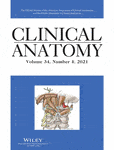
Clinical implications of the arterial supplies and their anastomotic territories in the nasolabial region for avoiding arterial complications during soft tissue filler injection (2021)
Title : Clinical implications of the arterial supplies and their anastomotic territories in the nasolabial region for avoiding arterial complications during soft tissue filler injection
Researcher : Jitaree, B., Phumyoo, T., Uruwan, S., …Pratoomthai, B., Tansatit, T.
Abstract : Introduction: The nasolabial fold (NLF) causes particular concern during aging in the middle face region. However, arterial complications of filler injections at this site have been continually reported during recent years. The aim of this study was to investigate the arterial locations and their anastomotic pathways related to filler injection sites in the NLF.
Materials and methods: Thirty hemi-faces of 15 embalmed Thai cadavers were dissected. Three anatomical landmarks of NLFs were assigned: the inferior margin level (NLF1), the mid-philtral horizontal line level (NLF2), and the inferior alar level (NLF3). Ten hemi-faces of five soft embalmed Thai cadavers underwent a modified Sihler’s staining procedure to investigate the arterial anastomoses.
Results: The artery closest to all of the landmarks was the facial artery. It was located inferomedial to NLF1 in 28%, and the mean distances along the X- and Y-axes were 3.53 ± 2.11 mm and 3.53 ± 1.75 mm, respectively. It was also located medial to NLF2 in 52.1% with an X-axis distance of 4.93 ± 1.53 mm. Several arteries were located close to NLF3, including the facial (33.3%), lateral nasal (33.3%), and infraorbital (30.0%) arteries. Anastomoses of the nasolabial arteries served to connect both the external–external and internal–external carotid systems.
Conclusions: Several arteries are located close to NLF1–NLF3. To prevent arterial injury, the locations and anastomotic pathways, as possible sources of severe complications, should be recognized prior to NLF filler injection.
Link to Academic article: https://doi.org/10.1002/ca.23617
Journal : Clinical Anatomy, 2021, 34(4).
Bibliography : Jitaree, B., Phumyoo, T., Uruwan, S., Jiirasutat, N., Pratoomthai, B., & Tansatit, T.(2021). Clinical implications of the arterial supplies and their anastomotic territories in the nasolabial region for avoiding arterial complications during soft tissue filler injection. Clinical Anatomy, 34(4), 581–589.

Clinical practice guideline for diagnosis and management of urticaria (2016)
Title : Clinical practice guideline for diagnosis and management of urticaria
Researcher : Clin.Prof.Suwat Benjaponpitak
Department : Faculty of Medicine, Siam University, Bangkok, Thailand
E-mail : med@siam.edu
Abstract : Urticaria is a common skin condition that can compromise quality of life and may affect individual performance at work or school. Remission is common in majority of patients with acute spontaneous urticaria (ASU); however, in chronic cases, less than 50% had remission. Angioedema either alone or with urticaria is associated with a much lower remission rate. Proper investigation and treatment is thus required. This guideline, a joint development of the Dermatological Society of Thailand, the Allergy, Asthma, and Immunology Association of Thailand and the Pediatric Dermatological Society of Thailand, is graded and recommended based on published evidence and expert opinion. With simple algorithms, it is aimed to help guiding both adult and pediatric physicians to better managing patients who have urticaria with/without angioedema. Like other recent guideline, urticaria is classified into spontaneous versus inducible types. Patients present with angioedema or angioedema alone, drug association should be excluded, acetyl esterase inhibitors (ACEIs) and non-steroidal anti-inflammatory drugs (NSAIDs) in particular. Routine laboratory investigation is not cost-effective in chronic spontaneous urticaria (CSU), unless patients have clinical suggesting autoimmune diseases. Non-sedating H1-antihistamine is the first-line treatment for 2-4 weeks; if urticaria was not controlled, increasing the dose up to 4 times is recommended. Sedating first-generation antihistamines have not been proven more advantage than non-sedating antihistamines. The only strong evidence-based alternative regimen for CSU is an anti-IgE: omalizumab; due to very high cost it however might not be accessible in low-middle income countries. Non-pharmacotherapeutic means to minimize hyper-responsive skin are also important and recommended, such as prevention skin from drying, avoidance of hot shower, scrubbing, and excessive sun exposure.
Link to Academic article: https://pubmed.ncbi.nlm.nih.gov/27690471/
Journal : Asian Pacific journal of allergy and immunology Volume 34 Number 3 September 2016
Bibliography : Kulthanan, K., Tuchinda, P., Chularojanamontri, L., Chanyachailert, P., Korkij, W., Chunharas, A., Wananukul, S., Limpongsanurak, W., Benjaponpitak, S., Wisuthsarewong, W., Aunhachoke, K., Wessagowit, V., Chatchatee, P., Wattanakrai, P., Jirapongsananuruk, O., Klaewsongkram, J., Noppakun, N., Vichyanond, P., Suthipinittharm, P., Ruxrungtham, K., Singalavanija, S., & Ngamphaiboon, J. (2016). Clinical practice guideline for diagnosis and management of urticaria. Asian Pac J Allergy Immunol, 34(3), 190-200.